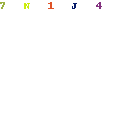Fire and ice
A country of glaciers and volcanoes, a land on the edge of habitability, an island surrounded by icebergs: we have an ‘extreme’ idea of Iceland, and not without reason. But Iceland also exports fruit juices and is frequented by tourists, almost as if it were a Mediterranean country. Very particular climatic and geological conditions, together with the tenacity and skills of the residents, make it a very special island
An island between Europe and America
Just south of the Arctic Circle, Iceland is closer to Greenland than Europe, but is considered European. After all, it is neither America nor Europe: it is on the border. The island emerged from the volcanic ridge that separates the European and American plates at the bottom of the Atlantic Ocean. Mountainous (up to 2,119 m), it has many active volcanoes: in 1963, an underwater eruption formed a new islet. The west and south coasts are less cold and arid: warm water arrives from the Gulf Stream which softens the temperature and generates rain. The interior is covered with glaciers.
The population lives in the capital Reykjavik (with 180,000 residents, over half of the total) and in small towns; the social and cultural organization is excellent.
Geysers, boiling jets of water and steam of volcanic origin, are used to heat houses and greenhouses, so agricultural production has increased and added to fishing, farming and mineral extraction. But today also industries and above all service activities are highly developed.
Development in extreme conditions
The harsh climate and the isolated position of Iceland in relation to the large maritime trade led to a late population of the island which only since the 9th century has experienced a stable human settlement. The colonization of Iceland, which was called the Land of Ice by the first Vikings who landed there, intensified at the end of the 9th century: the Norwegian settlers, mainly noble warriors, established many small autonomous communities in the country and in 930 they gave birth to a sort of assembly of free men (Althing), considered the first parliament in Europe.
In 1264 the country lost its independence and became a dominion of Norway; at the end of the 14th century, together with Norway, it passed to Denmark, which exercised a despotic government there for many centuries, violently imposing the Lutheran reform. Having emerged from immobility at the end of the 19th century, Iceland began its path towards autonomy in 1918, with the recognition of an independent sovereign state united with Denmark in the person of the king. With the Second World War the dissolution of this union accelerated and on 17 June 1944 the republic was proclaimed.
In the second half of the 20th century, Icelandic political life revolved around two major themes: relations with the United States, to which Iceland granted the Keflavík air base in 1951 under the NATO agreements, and the problem of fishing rights, the reason for a long dispute with Great Britain first, and more recently with Norway and Denmark. The so-called cod war with Great Britain ended in 1976 with the signing of an agreement largely in favor of Iceland. The presence of women in political life is very important in the country: many women elected to Parliament, a party, a women’s alliance, and for over fifteen years, from 1980 to 1996, a woman president of the Republic, Vigdis Finnbogardóttir, representative of the left.
